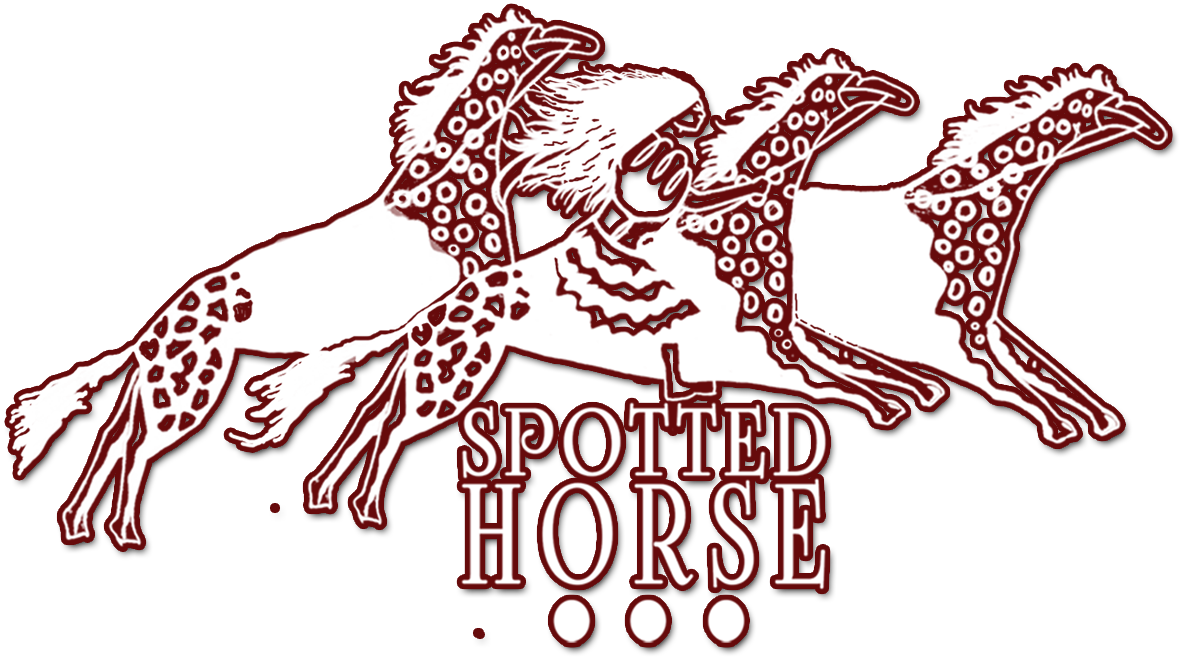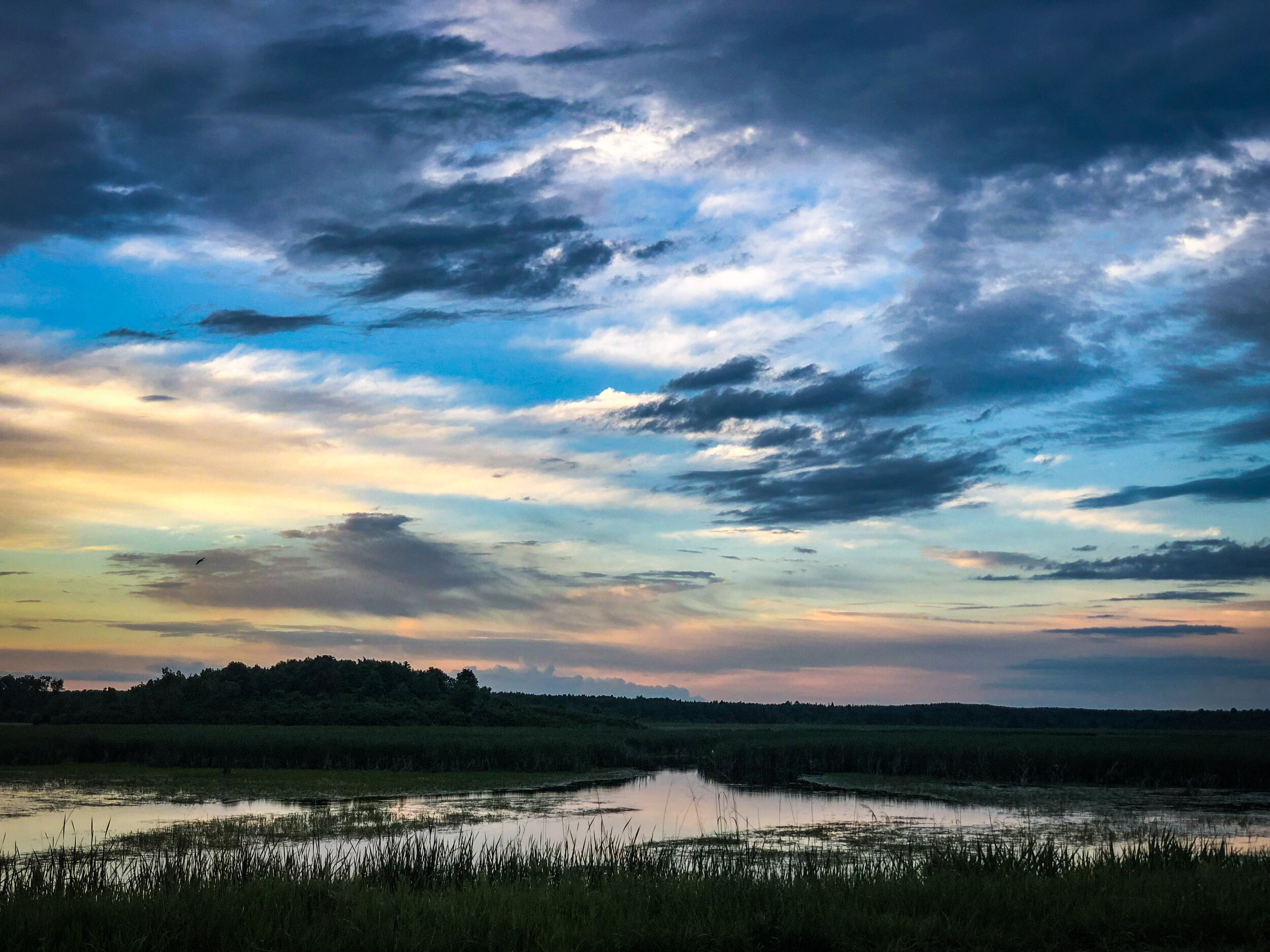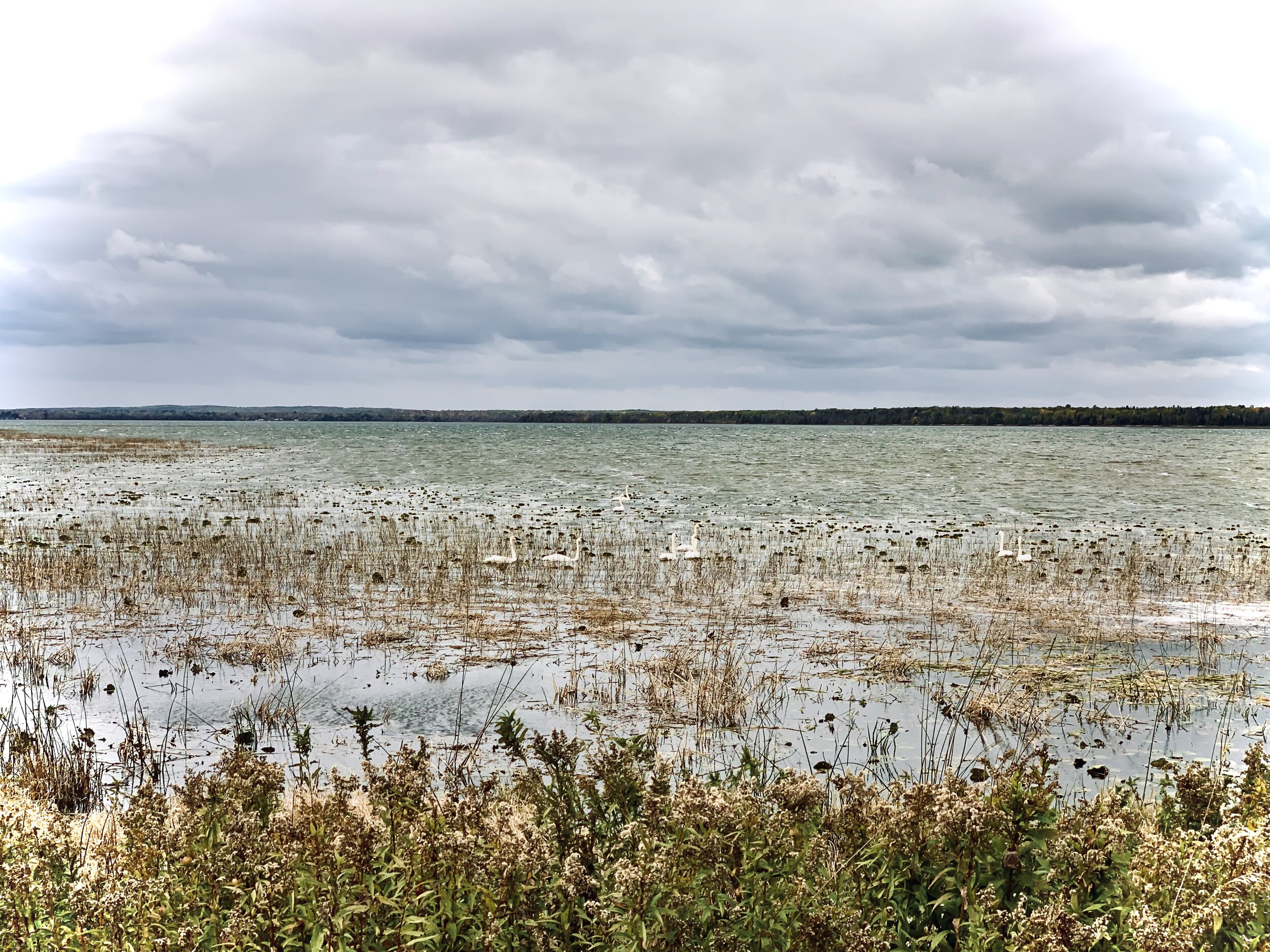Waabiziwag Giiwewag:
The Return of the Swans
I often pass the shores of Shell Lake, one of the sources of the Mississippi River. Like all of us who live giiwedinong, here in the north country, I look to the birds, each month in succession, to see who has returned, what they are up to, and how they look. This year, it is the swans, or "waabizii" in Anishinaabemowin, the Ojibwe language. The swans dominate the northern lakes like Shell Lake, Round Lake and lakes near the Tamarac Wildlife Refuge. A flock of a hundred or more swans may grace a lake. It’s a beautiful sight.
Minwenzhaa, or "long ago, that’s when America was great," there were flocks of birds which darkened the skies—loons, geese and swans in abundance; fish in every lake; and, of course, buffalo. That was a long time ago. By the time Minnesota came around, things were not going so great.
The last recorded trumpeter nesting pair in Minnesota was in 1884-1885. Hunted for food and feathers, the swans were skinned and sold to Europe where the skin and down were used to put powder on women’s faces. By 1935 there were a 69 trumpeter swans left in the lower 48 states. That was a tragedy. Really. All for some powder on faces.
It took a few decades of missing the swans, when in l977, things began to change. Carroll Henderson with the Audubon Society recently presented in Alexandria, Minn., on the return of the swans. Henderson worked with Department of Natural Resource's non- game species program in the l970s. The goal was to establish 30 breeding pairs in Minnesota. In 1984, DNR staff flew to Alaska and returned with 50 swan eggs to Minnesota. The eggs hatched at Carlos Avery Refuge and lived there until they were adults. Age four is when swans nest and mate, so they aren’t in a big hurry.
Mike Swan from the White Earth Biology Department and the Tamarac Refuge staff joined the DNR to release the newly adult swans into the reservation and Tamarac Refuge. The non-game program continued collecting 50 swan eggs for the next two years. They also secured swans from zoos that had nesting pairs. These were all released on the White Earth Reservation and within the Tamarac Refuge. By 2000, there were 670 breeding pairs of swans in Minnesota.
I remember my daughter Waseyabin seeing the swans in the yard on the lake. “Mom”, she said, “Why do they have tags, are they for sale?” Those were some of the swans in the breeding program, nice orange tags. By 2015 there were 1,700 breeding pairs; and in 2018, it’s estimated there were 17,000 juvenile and adult trumpeter swans in Minnesota. Now that’s a comeback.
RELATED
Waabiziiwag giiwewag, "the swans return home." This work to restore some of the original dignity of this land and waters is the work of a lot of people and agencies who are often not acknowledged. These birds were returned from the brink of extinction because they were classified as a non-game species. They were restored because people worked together, and the swans wanted to come home. They are some pretty noble creatures.
As I pass the shores of Shell Lake, I often stop to put my tobacco out in prayer for the wonders of the north country, and the headwaters of the Mississippi, home of the Waabiziiwag. Their homecoming has been long awaited.
Photos by LittleRedfeather Design taken at Shell Lake, MN.


